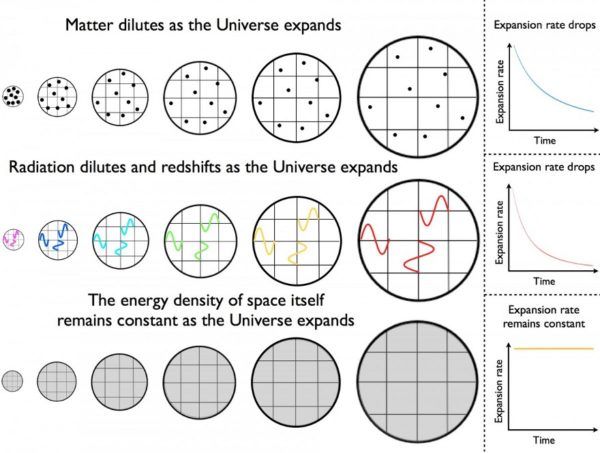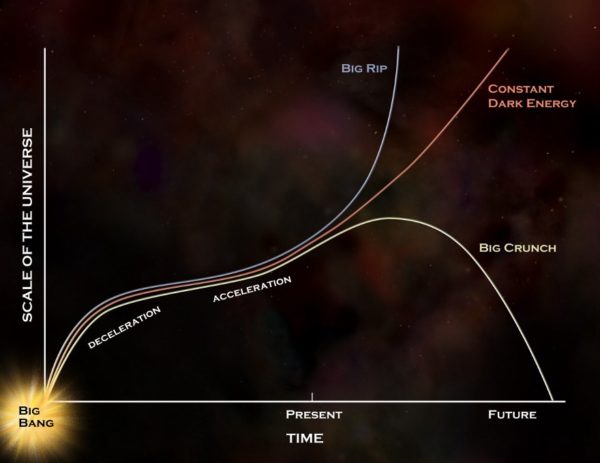"Even if I stumble on to the absolute truth of any aspect of the universe, I will not realise my luck and instead will spend my life trying to find flaws in this understanding - such is the role of a scientist." -Brian Schmidt
The discovery of the accelerated expansion of the Universe -- and of dark energy behind it -- in 1998 was one of the biggest physics revolutions of our lifetime. By measuring these distant galaxies and how their distances and redshifts scale in the Universe, we were able to determine that despite everything we knew about matter and radiation, there was an additional force at play, and it caused distant galaxies to accelerate away from us.
 How matter (top), radiation (middle), and a cosmological constant (bottom) all evolve with time in an expanding Universe. Image credit: E. Siegel, from his book, Beyond the Galaxy.
How matter (top), radiation (middle), and a cosmological constant (bottom) all evolve with time in an expanding Universe. Image credit: E. Siegel, from his book, Beyond the Galaxy.
The data is now good enough to determine that dark energy is extremely close, if not identical, to the predictions of a cosmological constant. But there are still other theoretical possibilities that are admissible, even if they aren’t favored. Perhaps in the coming decades, we’ll find out that the ‘Big Freeze’ isn’t necessarily where we’re headed in the distant future?


You wrote "Neutrinos first act like radiation (a-4) and then like matter (a-3) once the Universe cools past a certain point." I would love to see further discussion of this process and how it happens.
@Glen Martin #1: The transition occurs only for massive neutrinos (the kind we have in our universe). For E >> m, the neutrinos are relativisitic (p ~ E), and you treat their energy density in the same way as photons: as the universe expands, their wavelength and number density both reduce, which gives the a^-4 dependence. If m_nu == 0, that remains true forever.
But in our universe, m_nu > 0, so at some point you reach E_nu ~ m_nu, or equivalently, E_nu(kin) < m_nu, p ~ mv. At that point, the neutrinos have so little kinetic energy that they start to behave cosmologically the way dust and atoms behave: they just bounce around locally like a gas, and as the universe expands around them their number density drops. This gives an a^-3 dependence.
@Michael Kelsey: Thanks for the clarification. Greatly appreciated.